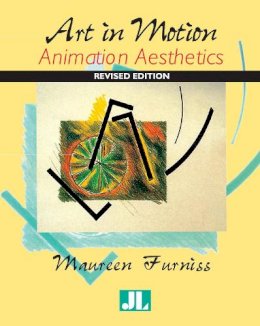11%OFF

Stock image for illustration purposes only - book cover, edition or condition may vary.
Art in Motion
Maureen Furniss
€ 34.99
€ 31.05
FREE Delivery in Ireland
Description for Art in Motion
Paperback. Num Pages: 288 pages, 133 b&w illus. BIC Classification: APFV. Category: (P) Professional & Vocational. Dimension: 239 x 200 x 19. Weight in Grams: 580.
Art in Motion, Revised Edition is the first comprehensive examination of the aesthetics of animation in its many forms. It gives an overview of the relationship between animation studies and media studies, then focuses on specific aesthetic issues concerning flat and dimensional animation, full and limited animation, and new technologies. A series of studies on abstract animation, audiences, representation, and institutional regulators is also included.
Product Details
Publisher
John Libbey & Co Australia
Number of pages
288
Format
Paperback
Publication date
2008
Condition
New
Number of Pages
288
Place of Publication
, Australia
ISBN
9780861966639
SKU
V9780861966639
Shipping Time
Usually ships in 4 to 8 working days
Ref
99-2
About Maureen Furniss
Maureen Furniss teaches on the animation faculty at California Institute of the Arts. She is the founding editor of Animation Journal.
Reviews for Art in Motion
True to the description on its back cover, this book remains a 'comprehensive' treatment of animation aesthetics
but comprehensive pertains primarily to the US
which Furniss (California Institute of the Arts) acknowledges
with occasional references to Canada and Europe. Covering history, alternatives, visuals, sound/structural design, limited animation, stop-motion and digital animation, censorship, audiences, representation, and abstract animation, the book provides a thorough overview suitable for nonspecialists because of its facile writing style and numerous illustrations. But to be truly comprehensive, this book should cover a broader geographical area. A serious shortcoming of this revised edition is the skimpy coverage of Asia's rich tradition. Though Japan merits a page or two, China and Korea each get a paragraph, India even less. For example, the author makes no mention of China's exquisite brush painting style, Korea's 'multimation' experiments, or the very recent accelerated growth of animation production in India, Korea, China, and parts of Southeast Asia. Only two of the 129 illustrations are Asia-oriented, both of the South Asian cooperative venture 'Meena' (initiated by UNICEF in association with Hanna-Barbera Cartoons), with not one word of explanation about it. Those who do not own the first edition (1998) may wish to acquire this one. Summing Up: Optional. Undergraduate and general readers.
ChoiceJ. A. Lent, Temple University, Dec. 2008
but comprehensive pertains primarily to the US
which Furniss (California Institute of the Arts) acknowledges
with occasional references to Canada and Europe. Covering history, alternatives, visuals, sound/structural design, limited animation, stop-motion and digital animation, censorship, audiences, representation, and abstract animation, the book provides a thorough overview suitable for nonspecialists because of its facile writing style and numerous illustrations. But to be truly comprehensive, this book should cover a broader geographical area. A serious shortcoming of this revised edition is the skimpy coverage of Asia's rich tradition. Though Japan merits a page or two, China and Korea each get a paragraph, India even less. For example, the author makes no mention of China's exquisite brush painting style, Korea's 'multimation' experiments, or the very recent accelerated growth of animation production in India, Korea, China, and parts of Southeast Asia. Only two of the 129 illustrations are Asia-oriented, both of the South Asian cooperative venture 'Meena' (initiated by UNICEF in association with Hanna-Barbera Cartoons), with not one word of explanation about it. Those who do not own the first edition (1998) may wish to acquire this one. Summing Up: Optional. Undergraduate and general readers.
ChoiceJ. A. Lent, Temple University, Dec. 2008
